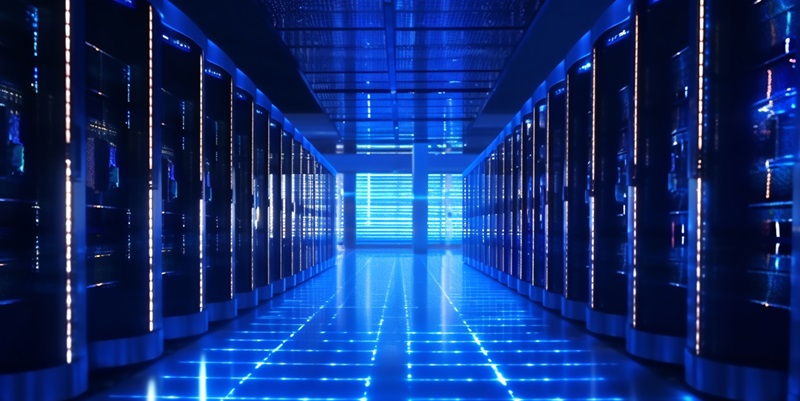The demand for data centers continues to surge as our world becomes increasingly digitized. With this growth comes a significant increase in electricity consumption, raising concerns about its environmental impact and sustainability. A recent report highlights the projection that data center electricity usage will double by 2026, urging industry stakeholders to find innovative solutions to mitigate this rising demand.
Factors contributing to increased electricity usage
The adoption of artificial intelligence (AI)-related services has been a driving force behind the escalating power consumption in data centers. The rapid advancements in AI technologies and their integration into various industries have necessitated the use of power-hungry Graphics Processing Units (GPUs) for efficient processing and analysis of vast amounts of data.
Investment in Power-Hungry GPUs
To meet the demands of emerging AI applications, data center providers have extensively invested in power-hungry GPUs. These specialized hardware components are crucial for accelerating machine learning algorithms and data-intensive tasks. While GPUs empower AI-driven innovations, they also increase electricity usage due to their intricate architecture and energy-intensive operations.
Influence of Artificial Intelligence and Cryptocurrency Trends
The expected surge in data center electricity consumption by 2026 is contingent upon several factors, including the pace of deployment, efficiency improvements, and the influence of AI and cryptocurrency trends. As both AI and cryptocurrency technologies continue to gain momentum, the power requirements of data centers are anticipated to further skyrocket unless adequately addressed.
Projected increase in electricity usage
The projection of doubling data center electricity usage by 2026 is contingent upon multiple variables. The rate at which data centers deploy new infrastructure, coupled with the adoption of efficiency improvements and the integration of evolving technologies like AI and cryptocurrency, will significantly impact the overall electricity consumption.
The United States, currently hosting approximately one-third of the world’s data centers, is poised to witness substantial growth in electricity consumption. The report suggests that US data center consumption will rise from 200 terawatt-hours (TWh) in 2022 to an estimated 260 TWh in 2026. This surge is indicative of the increasing global reliance on these facilities to support digital transformation across various sectors.
Efforts to Curtail Electricity Demand
Governments worldwide are recognizing the critical need to address the environmental footprint of data centers. The European Union, for instance, has implemented the Energy Efficiency Directive, imposing new obligations on data center operators on the continent. This legislation aims to curtail electricity demand in data centers, fostering greater sustainability and energy efficiency.
Data center operators are actively experimenting with more efficient cooling systems and heat reuse technologies to minimize their environmental impact. By utilizing advanced cooling solutions and repurposing excess heat generated by the servers, these operators aim to optimize energy usage and reduce their reliance on traditional cooling methods, which account for a significant portion of electricity consumption.
Growth of renewable energy production
The International Energy Agency (IEA) report, accompanying the findings on data center electricity usage, predicts a surge in renewable energy production. It suggests that renewable energy will surpass coal and generate more than a third of global electricity by 2025. This growing shift toward renewable sources offers a promising solution to power data centers sustainably and reduce their carbon footprint.
Industry response and solutions
Mark Yeeles, Vice President of the Secure Power Division at Schneider Electric UK and Ireland, affirms that the findings of the report come as no surprise. Yeeles believes that the data center industry’s willingness to integrate new technologies, reducing demand on the grid, positions it as a vital part of the solution to tackle the escalating electricity needs. Through collaborative efforts and innovation, such as the adoption of advanced power management systems, data center operators can actively contribute to sustainable practices.
Power crisis and immediate action
Highlighting the situation in Ireland, Yeeles calls for immediate and sustainable action to avoid a potential power crisis. As Ireland experiences rapid growth in data centers due to its favorable climate for cooling and strategic geographical location, the strain on the power grid becomes increasingly apparent. Yeeles emphasizes the importance of proactive measures, including the implementation of effective energy policies and the facilitation of renewable energy sources, to maintain a stable power supply and prevent any potential disruptions.
As the world becomes increasingly reliant on data centers, the surge in electricity consumption poses a significant environmental challenge. However, the industry’s proactive measures, such as investing in efficiency improvements and exploring renewable energy sources, offer hope for a more sustainable future. The need for collaboration between stakeholders, the implementation of legislation, and the continued integration of innovative technologies will be key in mitigating the impact on the environment while supporting global digital transformation.

